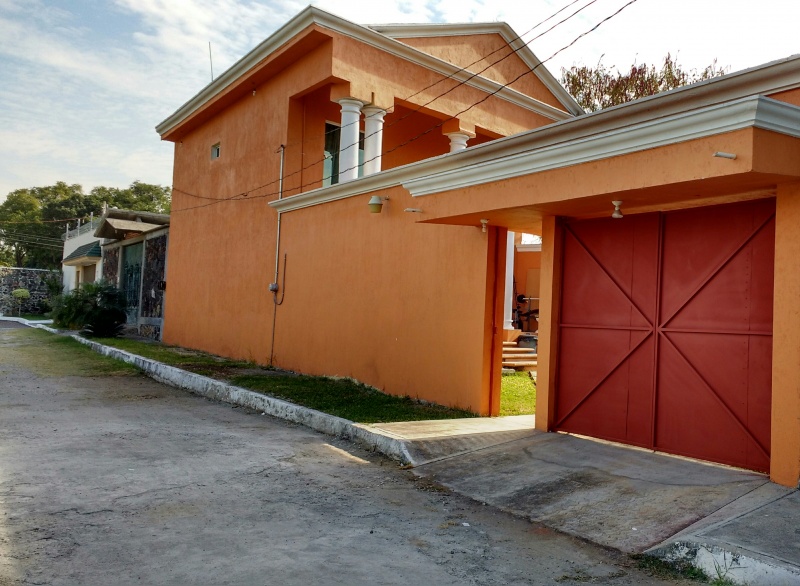
Vínculos
- ALIANZA MEXICANA DE WUSHU
- Artes Marciales Sheng Long
- Chiu Chi Ling México
- Embajada de China en México
- Escuela Mexicana de A. M. CH.
- Escuela Mexicana de Wushu
- Fa San Pak Mei Kune - Kung Fu
- ICBAWW
- International Kung-Fu Federation
- Instituto de Wushu AGS
- Kung Fu - El Salvador
- Master Tony Jordan
- The World Kuoshu Federation
- Shaolin Quan Fa Guan
- Sitio del Sifu León Chávez
- Sitio del Maestro Tony Rossell
- W C K P U
- Wing Pai Federation / ICBA - HQ
- Wing Sing Tong México
- World Hung-Gar Association
- Manjyu no Eki / Pan al vapor
- Smile Body Studio - Japan


Shaolinsi Xing Sheng
Chan Wu Guan
Centro de Cultura Tradicional Shaolin de México
y Centro América
Internartional Chiu Chi Ling
Hung-Gar Kung-Fu
HQ Mexico y Central America
Bugambilias No. 156, Fracc. Brisas
Cuautla, Morelos. C. P. 62757
Tel: (735) 211 5330
E-mail: info@remiskungfu.mx
Si buscas
hosting web,
dominios web,
correos empresariales o
crear páginas web gratis,
ingresa a
PaginaMX
Por otro lado, si buscas un generador de códigos qr ingresa al Creador de Códigos QR más potente que existe
Si estás buscando productos para sublimación de excelente calidad, te recomendamos a uno de los mejores distrbuidores de productos para sublimar en México, Color Make.
Cuentan con una amplia variedad de productos como son: tazas para sublimar, plumas, mochilas, rompecabezas, termos, botellas y mucho más. Además de sublimación también tienen productos para otras técnicas de transferencia de imágenes como son: DTF, Vinil Textil, Grabado Láser y Transfer.



Libro de Visitas
Siéntete a gusto de dejarnos un mensaje en nuestro libro de visitas:
![]()
![]()
![]()
![]()
![]()
![]()
![]()








Glennhurce
22 Jan 2025 - 11:02 am
On a long-dormant pad in Florida, a rocket that could challenge SpaceX’s dominance is poised to launch
[url=https://kra26s.cc]kraken войти[/url]
On a Florida launchpad that has been dormant for almost two decades, a new, roughly 320-foot (98-meter) rocket — developed by Jeff Bezos’ company Blue Origin — is poised for its maiden flight.
The uncrewed launch vehicle, called New Glenn, will mark Blue Origin’s first attempt to send a rocket to orbit, a feat necessary if the company hopes to chip away at SpaceX’s long-held dominance in the industry.
New Glenn is set to lift off from Cape Canaveral Space Force Station as early as next week.
https://kra26s.cc
Кракен тор
The rocket, which stands about as tall as a 30-story building, consists of several parts: The first-stage rocket booster gives the initial thrust at liftoff. Atop the booster is an upper rocket stage that includes a cargo bay protected by a nose cone that will house experimental technology for this mission.
And, in an attempt to replicate the success that SpaceX has found reusing rocket boosters over the past decade, Blue Origin will also aim to guide New Glenn’s first-stage rocket booster back to a safe landing on a seafaring platform — named Jacklyn for Bezos’ mother — minutes after takeoff.
Like SpaceX, Blue Origin will seek to recover, refurbish and reuse first-stage rocket boosters to drive down costs.
For this inaugural mission, a smooth flight is not guaranteed.
But the eventual success of New Glenn, named after storied NASA astronaut John Glenn, is instrumental to some of Blue Origin’s most ambitious goals.
The rocket could one day power national security launches, haul Amazon internet satellites to space and even help in the construction of a space station that Blue Origin is developing with commercial partners.
Wesleyhiz
22 Jan 2025 - 11:00 am
Scientists have identified an estimated 10% of all species on Earth. Here’s what they found in 2024
[url=https://kra26c.cc]kraken тор браузер[/url]
A toothy toadstool. A vegetarian piranha with a distinctive mark. And a pygmy pipehorse floating in the Indian Ocean shallows.
These wild wonders were among the hundreds of previously unknown species of animals, plants and fungi that scientists named and described for the first time in 2024, expanding our surprisingly limited knowledge of Earth’s diversity.
“Scientists estimate that we’ve identified only one-tenth of all species on Earth,” said Dr.
Shannon Bennett, chief of science at the California Academy of Sciences, in a statement.
https://kra26c.cc
kra26 cc
“While it is critical to place protections on known threatened species, we must also allocate resources towards identifying unknown species that may be just as important to the functioning of an ecosystem,” Bennett said.
Researchers connected to the institution described 138 new species in 2024, including 32 fish. One standout was a pygmy pipehorse named Cylix nkosi. The seahorse relative was originally found in 2021 in the cool temperate waters surrounding the North Island of New Zealand, but the species described this year was discovered in the subtropical waters off South Africa, expanding the known range of this group to the Indian Ocean
“South African reefs present notoriously difficult diving conditions with rough weather and intense, choppy waves — we knew we only had one dive to find it,” underwater photographer and marine biologist Richard Smith said in a statement.
“This species is also quite cryptic, about the size of a golf tee, but luckily we spotted a female camouflaged against some sponges about a mile offshore on the sandy ocean floor.”
The researchers involved in describing the new species chose nkosi as its name. A reference to the local Zulu word for “chief,” the name reflects the species’ crown-like head shape and acknowledges South Africa’s KwaZulu-Natal province where it was found.
Jeromemig
22 Jan 2025 - 11:00 am
The survivors of recent crashes were sitting at the back of the plane. What does that tell us about airplane safety?
[url=https://kra26c.cc]kraken официальный сайт[/url]
Look at the photos of the two fatal air crashes of the last two weeks, and amid the horror and the anguish, one thought might come to mind for frequent flyers.
The old frequent-flyer adage is that sitting at the back of the plane is a safer place to be than at the front — and the wreckage of both Azerbaijan Airlines flight 8243 and Jeju Air flight 2216 seem to bear that out.
https://kra26c.cc
kraken официальный сайт
The 29 survivors of the Azeri crash were all sitting at the back of the plane, which split into two, leaving the rear half largely intact. The sole survivors of the South Korean crash, meanwhile, were the two flight attendants in their jumpseats in the very tail of the plane.
So is that old adage — and the dark humor jokes about first and business class seats being good until there’s a problem with the plane — right after all?
In 2015, TIME Magazine reporters wrote that they had combed through the records of all US plane crashes with both fatalities and survivors from 1985 to 2000, and found in a meta-analysis that seats in the back third of the aircraft had a 32% fatality rate overall, compared with 38% in the front third and 39% in the middle third.
Even better, they found, were middle seats in that back third of the cabin, with a 28% fatality rate. The “worst” seats were aisles in the middle third of the aircraft, with a 44% fatality rate.
But does that still hold true in 2024?
According to aviation safety experts, it’s an old wives’ tale.
“There isn’t any data that shows a correlation of seating to survivability,” says Hassan Shahidi, president of the Flight Safety Foundation. “Every accident is different.”
“If we’re talking about a fatal crash, then there is almost no difference where one sits,” says Cheng-Lung Wu, associate professor at the School of Aviation of the University of New South Wales, Sydney.
Ed Galea, professor of fire safety engineering at London’s University of Greenwich, who has conducted landmark studies on plane crash evacuations, warns, “There is no magic safest seat.”
Greggenhaf
22 Jan 2025 - 10:19 am
A brief history of sunglasses, from Ancient Rome to Hollywood
[url=https://krkns.cc]kraken tor[/url]
Sunglasses, or dark glasses, have always guarded against strong sunlight, but is there more to “shades” than we think?
The pupils of our eyes are delicate and react immediately to strong lights. Protecting them against light — even the brilliance reflected off snow — is important for everyone. Himalayan mountaineers wear goggles for this exact purpose.
Protection is partly the function of sunglasses. But dark or colored lens glasses have become fashion accessories and personal signature items. Think of the vast and famous collector of sunglasses Elton John, with his pink lensed heart-shaped extravaganzas and many others.
When did this interest in protecting the eyes begin, and at what point did dark glasses become a social statement as well as physical protection?
The Roman Emperor Nero is reported as holding polished gemstones to his eyes for sun protection as he watched fighting gladiators.
We know Canadian far north Copper Inuit and Alaskan Yupik wore snow goggles of many kinds made of antlers or whalebone and with tiny horizontal slits. Wearers looked through these and they were protected against the snow’s brilliant light when hunting. At the same time the very narrow eye holes helped them to focus on their prey.
In 12th-century China, judges wore sunglasses with smoked quartz lenses to hide their facial expressions — perhaps to retain their dignity or not convey emotions.
Davidprade
22 Jan 2025 - 10:13 am
The survivors of recent crashes were sitting at the back of the plane. What does that tell us about airplane safety?
[url=https://kra26c.cc]kraken зеркало[/url]
Look at the photos of the two fatal air crashes of the last two weeks, and amid the horror and the anguish, one thought might come to mind for frequent flyers.
The old frequent-flyer adage is that sitting at the back of the plane is a safer place to be than at the front — and the wreckage of both Azerbaijan Airlines flight 8243 and Jeju Air flight 2216 seem to bear that out.
https://kra26c.cc
kraken darknet
The 29 survivors of the Azeri crash were all sitting at the back of the plane, which split into two, leaving the rear half largely intact. The sole survivors of the South Korean crash, meanwhile, were the two flight attendants in their jumpseats in the very tail of the plane.
So is that old adage — and the dark humor jokes about first and business class seats being good until there’s a problem with the plane — right after all?
In 2015, TIME Magazine reporters wrote that they had combed through the records of all US plane crashes with both fatalities and survivors from 1985 to 2000, and found in a meta-analysis that seats in the back third of the aircraft had a 32% fatality rate overall, compared with 38% in the front third and 39% in the middle third.
Even better, they found, were middle seats in that back third of the cabin, with a 28% fatality rate. The “worst” seats were aisles in the middle third of the aircraft, with a 44% fatality rate.
But does that still hold true in 2024?
According to aviation safety experts, it’s an old wives’ tale.
“There isn’t any data that shows a correlation of seating to survivability,” says Hassan Shahidi, president of the Flight Safety Foundation. “Every accident is different.”
“If we’re talking about a fatal crash, then there is almost no difference where one sits,” says Cheng-Lung Wu, associate professor at the School of Aviation of the University of New South Wales, Sydney.
Ed Galea, professor of fire safety engineering at London’s University of Greenwich, who has conducted landmark studies on plane crash evacuations, warns, “There is no magic safest seat.”
Georgeliawl
22 Jan 2025 - 10:12 am
Scientists have identified an estimated 10% of all species on Earth. Here’s what they found in 2024
[url=https://kra26c.cc]kraken ссылка[/url]
A toothy toadstool. A vegetarian piranha with a distinctive mark. And a pygmy pipehorse floating in the Indian Ocean shallows.
These wild wonders were among the hundreds of previously unknown species of animals, plants and fungi that scientists named and described for the first time in 2024, expanding our surprisingly limited knowledge of Earth’s diversity.
“Scientists estimate that we’ve identified only one-tenth of all species on Earth,” said Dr.
Shannon Bennett, chief of science at the California Academy of Sciences, in a statement.
https://kra26c.cc
Љракен даркнет
“While it is critical to place protections on known threatened species, we must also allocate resources towards identifying unknown species that may be just as important to the functioning of an ecosystem,” Bennett said.
Researchers connected to the institution described 138 new species in 2024, including 32 fish. One standout was a pygmy pipehorse named Cylix nkosi. The seahorse relative was originally found in 2021 in the cool temperate waters surrounding the North Island of New Zealand, but the species described this year was discovered in the subtropical waters off South Africa, expanding the known range of this group to the Indian Ocean
“South African reefs present notoriously difficult diving conditions with rough weather and intense, choppy waves — we knew we only had one dive to find it,” underwater photographer and marine biologist Richard Smith said in a statement.
“This species is also quite cryptic, about the size of a golf tee, but luckily we spotted a female camouflaged against some sponges about a mile offshore on the sandy ocean floor.”
The researchers involved in describing the new species chose nkosi as its name. A reference to the local Zulu word for “chief,” the name reflects the species’ crown-like head shape and acknowledges South Africa’s KwaZulu-Natal province where it was found.
Kennethscere
22 Jan 2025 - 09:55 am
Most plane crashes are ‘survivable’
[url=https://kra26c.cc]кракен[/url]
First, the good news. “The vast majority of aircraft accidents are survivable, and the majority of people in accidents survive,” says Galea. Since 1988, aircraft — and the seats inside them — must be built to withstand an impact of up to 16G, or g-force up to 16 times the force of gravity. That means, he says, that in most incidents, “it’s possible to survive the trauma of the impact of the crash.”
For instance, he classes the initial Jeju Air incident as survivable — an assumed bird strike, engine loss and belly landing on the runway, without functioning landing gear. “Had it not smashed into the concrete reinforced obstacle at the end of the runway, it’s quite possible the majority, if not everyone, could have survived,” he says.
The Azerbaijan Airlines crash, on the other hand, he classes as a non-survivable accident, and calls it a “miracle” that anyone made it out alive.
https://kra26c.cc
kraken войти
Most aircraft involved in accidents, however, are not — as suspicion is growing over the Azerbaijan crash — shot out of the sky.
And with modern planes built to withstand impacts and slow the spread of fire, Galea puts the chances of surviving a “survivable” accident at at least 90%.
Instead, he says, what makes the difference between life and death in most modern accidents is how fast passengers can evacuate.
Aircraft today must show that they can be evacuated in 90 seconds in order to gain certification. But a theoretical evacuation — practiced with volunteers at the manufacturers’ premises — is very different from the reality of a panicked public onboard a jet that has just crash-landed.
Galea, an evacuation expert, has conducted research for the UK’s Civil Aviation Authority (CAA) looking at the most “survivable” seats on a plane. His landmark research, conducted over several years in the early 2000s, looked at how passengers and crew behaved during a post-crash evacuation, rather than looking at the crashes themselves. By compiling data from 1,917 passengers and 155 crew involved in 105 accidents from 1977 to 1999, his team created a database of human behavior around plane crashes.
His analysis of which exits passengers actually used “shattered many myths about aircraft evacuation,” he says. “Prior to my study, it was believed that passengers tend to use their boarding exit because it was the most familiar, and that passengers tend to go forward. My analysis of the data demonstrated that none of these myths were supported by the evidence.”
Henrygaida
22 Jan 2025 - 09:26 am
На мега даркнет маркет ссылка каждый пользователь найдёт товары, соответствующие его потребностям. Платформа представляет широкий ассортимент: от техники до одежды и аксессуаров. Простота поиска и акции делают процесс покупок более приятным. Мега также гарантирует безопасность сделок, что привлекает покупателей. Именно зайти на mega сохраняет статус любимой платформы для миллионов покупателей.
mega sb com: https://mega-active-links.com
Victorpam
22 Jan 2025 - 09:22 am
Scientists have identified an estimated 10% of all species on Earth. Here’s what they found in 2024
[url=https://kra26c.cc]kraken onion[/url]
A toothy toadstool. A vegetarian piranha with a distinctive mark. And a pygmy pipehorse floating in the Indian Ocean shallows.
These wild wonders were among the hundreds of previously unknown species of animals, plants and fungi that scientists named and described for the first time in 2024, expanding our surprisingly limited knowledge of Earth’s diversity.
“Scientists estimate that we’ve identified only one-tenth of all species on Earth,” said Dr.
Shannon Bennett, chief of science at the California Academy of Sciences, in a statement.
https://kra26c.cc
кракен вход
“While it is critical to place protections on known threatened species, we must also allocate resources towards identifying unknown species that may be just as important to the functioning of an ecosystem,” Bennett said.
Researchers connected to the institution described 138 new species in 2024, including 32 fish. One standout was a pygmy pipehorse named Cylix nkosi. The seahorse relative was originally found in 2021 in the cool temperate waters surrounding the North Island of New Zealand, but the species described this year was discovered in the subtropical waters off South Africa, expanding the known range of this group to the Indian Ocean
“South African reefs present notoriously difficult diving conditions with rough weather and intense, choppy waves — we knew we only had one dive to find it,” underwater photographer and marine biologist Richard Smith said in a statement.
“This species is also quite cryptic, about the size of a golf tee, but luckily we spotted a female camouflaged against some sponges about a mile offshore on the sandy ocean floor.”
The researchers involved in describing the new species chose nkosi as its name. A reference to the local Zulu word for “chief,” the name reflects the species’ crown-like head shape and acknowledges South Africa’s KwaZulu-Natal province where it was found.
Mosessow
22 Jan 2025 - 08:51 am
The survivors of recent crashes were sitting at the back of the plane. What does that tell us about airplane safety?
[url=https://kra26c.cc]kraken darknet onion[/url]
Look at the photos of the two fatal air crashes of the last two weeks, and amid the horror and the anguish, one thought might come to mind for frequent flyers.
The old frequent-flyer adage is that sitting at the back of the plane is a safer place to be than at the front — and the wreckage of both Azerbaijan Airlines flight 8243 and Jeju Air flight 2216 seem to bear that out.
https://kra26c.cc
kraken ссылка
The 29 survivors of the Azeri crash were all sitting at the back of the plane, which split into two, leaving the rear half largely intact. The sole survivors of the South Korean crash, meanwhile, were the two flight attendants in their jumpseats in the very tail of the plane.
So is that old adage — and the dark humor jokes about first and business class seats being good until there’s a problem with the plane — right after all?
In 2015, TIME Magazine reporters wrote that they had combed through the records of all US plane crashes with both fatalities and survivors from 1985 to 2000, and found in a meta-analysis that seats in the back third of the aircraft had a 32% fatality rate overall, compared with 38% in the front third and 39% in the middle third.
Even better, they found, were middle seats in that back third of the cabin, with a 28% fatality rate. The “worst” seats were aisles in the middle third of the aircraft, with a 44% fatality rate.
But does that still hold true in 2024?
According to aviation safety experts, it’s an old wives’ tale.
“There isn’t any data that shows a correlation of seating to survivability,” says Hassan Shahidi, president of the Flight Safety Foundation. “Every accident is different.”
“If we’re talking about a fatal crash, then there is almost no difference where one sits,” says Cheng-Lung Wu, associate professor at the School of Aviation of the University of New South Wales, Sydney.
Ed Galea, professor of fire safety engineering at London’s University of Greenwich, who has conducted landmark studies on plane crash evacuations, warns, “There is no magic safest seat.”